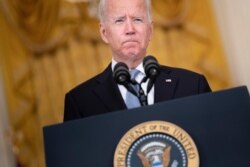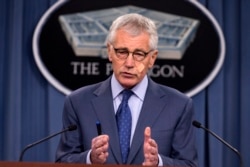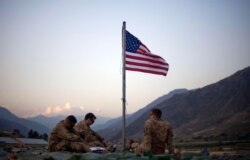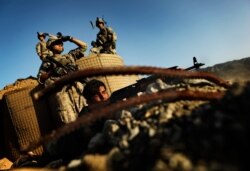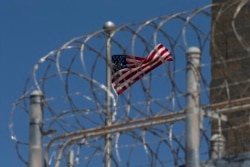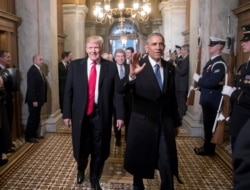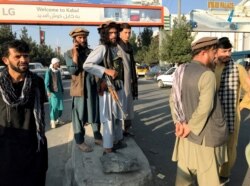The final throes of the United States’ 20-year military engagement in Afghanistan guarantee that the war many Americans would have preferred to forget will instead be seared into the country’s collective memory with the same permanence as the disastrous fall of Saigon in 1975.
Promised a “secure and orderly” withdrawal of U.S. troops and personnel by President Joe Biden as recently as July, what Americans got was chaos, as the insurgent Taliban — deposed by the U.S. in 2001 — rolled up city after city in the space of little more than a week, finally entering Kabul unopposed on August 15.
As American diplomats burned sensitive documents and destroyed equipment in the embassy, U.S. troops were rushed back into the country to try to establish a modicum of control over the airport, where mobs of Afghan civilians surged onto the tarmac, desperate for a seat on a flight out of the country. At least seven people died, some falling to their deaths after clinging to the outside of a departing U.S. military transport plane.
Throughout last weekend, the Biden administration had articulated no clear plan for getting all American citizens still in Kabul out safely, much less the tens of thousands of Afghans who served beside American soldiers in various capacities and who now fear that they and their families will be subject to reprisals by the notoriously brutal Taliban.
On Monday, Biden appeared at the White House to address the ongoing crisis. He conceded that the collapse of the Afghan government and security forces “did unfold more quickly than we had anticipated.”
He confirmed that 6,000 U.S. troops had been sent back into Kabul to assist with the evacuation of American and allied personnel as well as Afghans, including interpreters eligible for Special Immigrant Visas (SIVs).
“In the coming days, the U.S. military will provide assistance to move more SIV-eligible Afghans and their families out of Afghanistan,” Biden said. “We're also expanding refugee access to cover other vulnerable Afghans who worked for our embassy, for U.S. nongovernmental organizations and Afghans who otherwise are at great risk.”
However, Biden adamantly defended his decision to withdraw, and delivered damning criticism of Afghanistan’s civilian and military leadership.
“Afghanistan’s political leaders gave up and fled the country,” he said. “The Afghan military collapsed, sometimes without trying to fight. If anything, the developments of the past week reinforced that ending U.S. military involvement in Afghanistan now was the right decision. American troops cannot and should not be fighting in a war, and dying in a war, that Afghan forces are not willing to fight for themselves.”
The utter collapse of the Afghan government and security forces, which the U.S. spent two decades shoring up, sparked a round of reassessments of the conflict.
Chuck Hagel, the former Republican senator from Nebraska who went on to oversee U.S. operations in Afghanistan as Secretary of Defense from 2013 to 2015, said in a CNN interview on Monday that the U.S. “didn’t understand” the history of Afghanistan from the start.
“We have never understood the culture, we never understood the religion. We never understood the tribalism, all the dynamics that make up a culture,” Hagel said.
The end result, he added, is “unfortunate, and damned sad.”
An abysmal end to America’s longest war
Since 2001, 2,448 Americans have died in the conflict. American researchers at Brown University estimate that 241,000 people have been killed in war zones in Pakistan and Afghanistan over that period, including 71,000 civilians.
The U.S. poured $2 trillion into trying to rebuild the country in the image of a Western democracy, but public opinion surveys taken this summer showed that a clear majority of Americans backed President Biden’s decision to leave Afghanistan. More than one in three said they believed the war there could not be won.
“The [American] public has not really cared about this war that much for a long time,” Michael O’Hanlon, a senior fellow and director of research in foreign policy at the Brookings Institution, told VOA in July. “Ever since roughly the overthrow of the Taliban in late 2001, this war just hasn't mattered to that many people that much of the time. And the only time that was talked about very much in presidential politics was probably the 2008 presidential election. But it was not even a point of disagreement.”
Success seemed possible
On October 8, it will be a full 20 years since Americans across the country awoke to newspaper headlines announcing, “U.S. Strikes Back,” and coverage of a massive overnight air assault on targets in Taliban-ruled Afghanistan. It had been less than a month since teams of al-Qaida terrorists hijacked four American jetliners on 9/11, crashing two into the World Trade Center in Manhattan, one into the Pentagon and one into a Pennsylvania field, killing 2,996 people in total.
Over the following weeks, Americans watched as the Taliban regime in Afghanistan, which had provided a safe haven for al-Qaida and its leader, Osama bin Laden, was routed by a combination of U.S. air power and an alliance of Afghan tribal militias.
By November, the Taliban had been driven from the country’s major cities: Mazar-e-Sharif, Herat, Kabul, Jalalabad. On December 5, 2001, with U.S. support, an interim government of Afghanistan was formed, led by Hamid Karzai. Days later, the Taliban’s last major stronghold in the southern city of Kandahar surrendered, and Mullah Omar, the group’s founder and leader, fled into hiding.
Americans were treated to romantic stories of bushy-bearded U.S. special forces operators who called in airstrikes while on horseback on the arid plains of northern Afghanistan.
At the time, it still seemed possible to imagine that the United States’ venture into Afghanistan would end with the brutally oppressive Taliban regime replaced with a Western-friendly democratic state that would serve as an example to people around the world as an alternative to extremism.
Dark chapter in US history
The two decades that followed the initial invasion of Afghanistan reflected a different reality.
Since U.S. boots first hit the ground, troop levels in the country rose, dropped and then rose again as efforts to install a durable, democratically elected government butted up against continuing suicide attacks and armed resistance by the Taliban and internecine squabbling among the United States’ nominal allies in the country. Over time, the Taliban regrouped and U.S. strategy evolved into a long-term counterinsurgency effort.
At the same time, the U.S. was forced to confront disturbing realities about its own policies.
Early in the war, the U.S. created a prison camp in Guantanamo Bay, Cuba, where U.S. troops held “enemy combatants” captured in Afghanistan, affording them neither due process rights nor the protections of the Geneva Conventions.
Rendition and torture
Over the next few years, the American public got the first hints of the extent to which the U.S. was using extralegal methods to capture and interrogate prisoners both in Afghanistan and elsewhere. They learned of the “extraordinary rendition” of suspects to “black sites” in countries where torture was commonplace and, in some cases, to places under U.S. control, like Bagram Airfield, outside Kabul.
Then came secret memos from the Department of Justice that purportedly cleared American officials themselves to use techniques such as waterboarding, commonly understood to be torture, to extract information from prisoners.
Even as it fought to defend itself against accusations that it had betrayed its own ideals, the U.S. launched another war, gathering allies to invade Iraq and destroy the weapons of mass destruction that the administration of President George W. Bush incorrectly insisted Iraqi strongman Saddam Hussein was hiding.
Afghanistan as afterthought
As the Iraq war raged, the focus of the U.S. public on Afghanistan faded. In part, said O’Hanlon of the Brookings Institution, that is an ironic artifact of the war’s initial popularity.
“There was overwhelming support in the fall of 2001 to punish the Taliban severely, even if we didn't quite know what that meant,” he said.
As a result, there was relatively little initial argument about whether the U.S. ought to be in Afghanistan in the first place, and therefore a more widespread acceptance of the idea that the U.S. had a responsibility to maintain stability there.
Inside the U.S., meanwhile, the reckoning over Guantanamo Bay and the U.S. torture program — eventually recognized as such by the Obama administration — would drag on for years. To this day, Gitmo holds 40 prisoners.
A multi-administration struggle
Four U.S. presidents — Bush, Barack Obama, Donald Trump and now Biden — attempted to give a democratically elected Afghan government the tools it needed to keep an on-again, off-again insurgency at bay.
After Republican Bush left office in 2009, Obama, a Democrat, surged troops and contractors into the country in his first term, pushing the U.S. presence to more than 100,000 before announcing a drawdown years later that left a force about one-tenth of that size in the country.
Trump, a Republican, had campaigned on extracting the U.S. from its “forever wars” and initially said that he would be bringing all U.S. forces home. However, not long into his presidency, he reversed those plans out of fear that the country would become a “vacuum” that would attract terror groups. In a speech on August 22, 2017, he said, “A hasty withdrawal would create a vacuum that terrorists, including ISIS and al-Qaida, would instantly fill, just as happened before September 11th.”
However, in the spring of 2020, Trump negotiated a deal with the Taliban that promised to withdraw substantially all U.S. combat troops from the country by the spring of 2021, a pledge that the Biden administration honored.
Coming home
In April of this year, Democrat Biden announced that virtually all the remaining U.S. troops in the country would be brought home before September 11, 2021, the 20th anniversary of the attacks that triggered the war.
The tone of Biden’s comments when he announced the troop withdrawal was far from triumphalist.
“We cannot continue the cycle of extending or expanding our military presence in Afghanistan, hoping to create ideal conditions for the withdrawal, and expecting a different result," he said. "I’m now the fourth United States president to preside over American troop presence in Afghanistan: two Republicans, two Democrats. I will not pass this responsibility on to a fifth.”
Taliban energized
After Biden confirmed U.S. troops’ departure, the Taliban began mobilizing, setting up checkpoints in regions of the country where the U.S. no longer had a presence. By the end of May, the group was attacking on multiple fronts across the country, threatening provincial capitals.
In early July, despite evidence of the Taliban’s advances in parts of Afghanistan, President Biden assured the U.S. that the withdrawal of combat troops was proceeding and said the possibility of “the Taliban overrunning everything and owning the whole country” was “highly unlikely.”
“There’s going to be no circumstance where you see people being lifted off the roof of a embassy,” Biden vowed, invoking images of the U.S. evacuation from Vietnam at the end of that war in 1975, when helicopters carried people from the roof of the U.S. embassy in Saigon.
Nevertheless, by August 6, the group had taken control of Zaranj, the capital of Nimruz Province in the Southwest. The following 10 days would be a story of a completely unchecked Taliban advance across the country. By August 13, Afghanistan’s second and third largest cities, Kandahar and Herat, had both fallen, along with numerous other towns and cities. On August 14, the Taliban took Jalalabad in the country’s extreme east, and were poised to enter Kabul, which they did the next day, even as Afghan President Ashraf Ghani and much of his cabinet fled the country.





